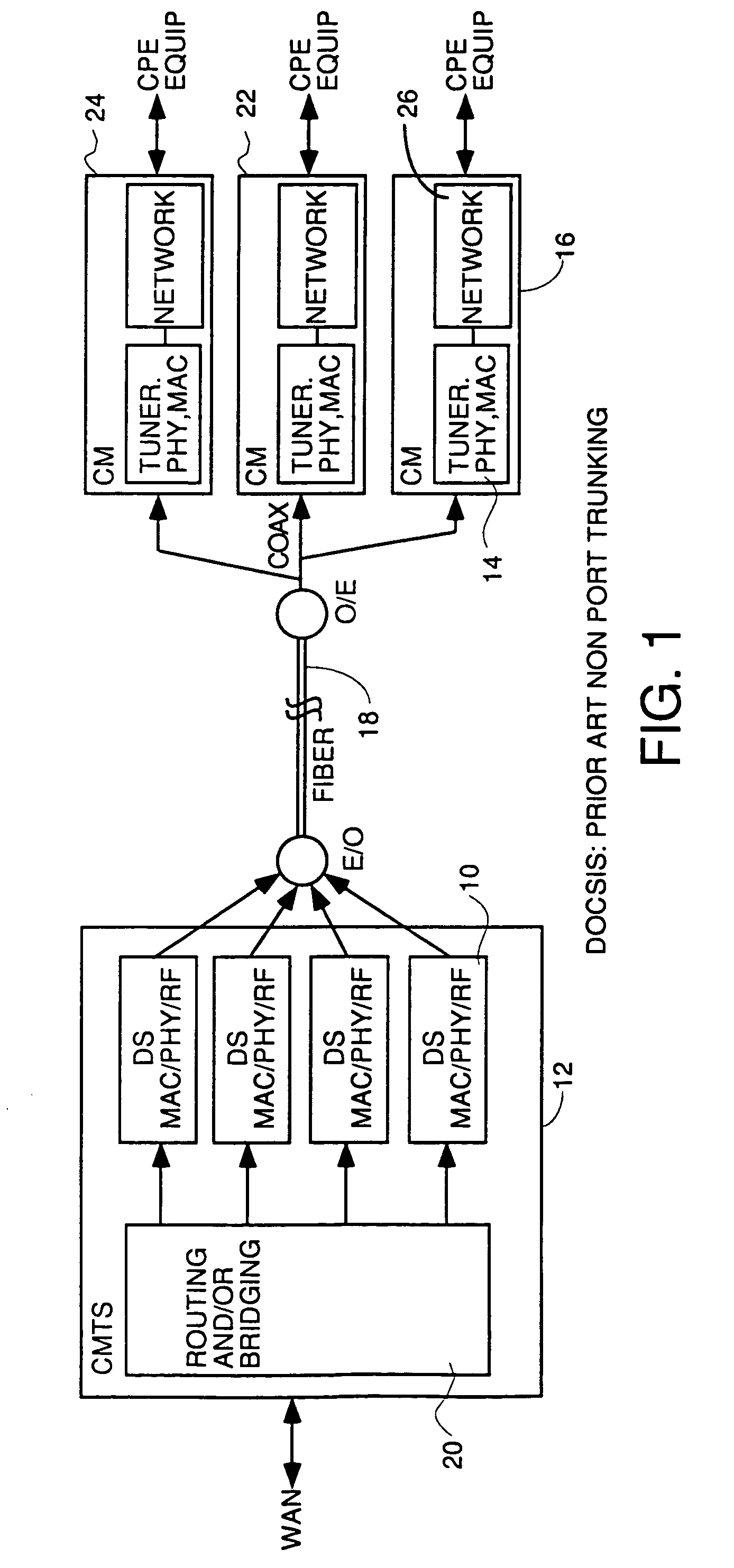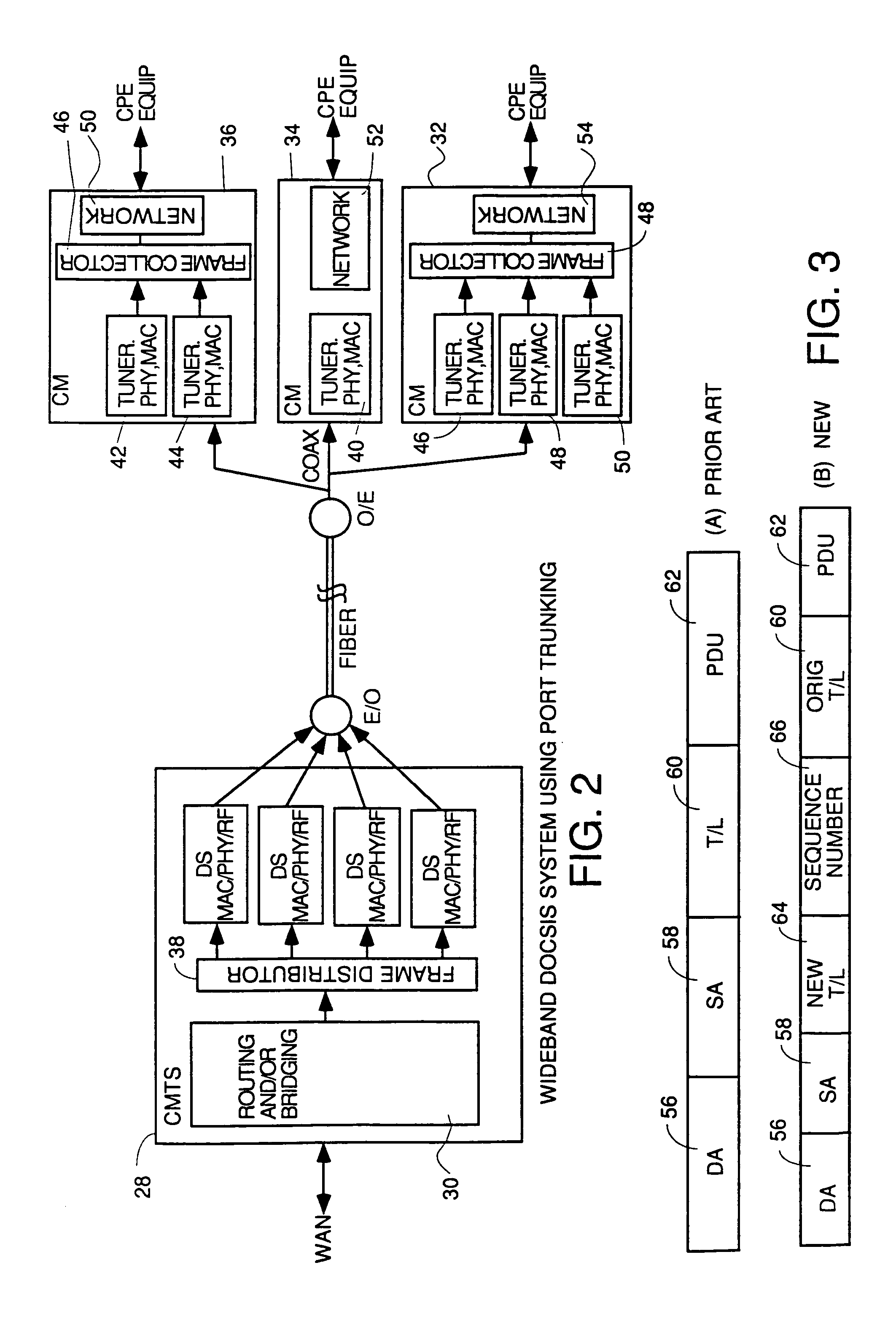Wideband DOCSIS on catv systems using port-trunking
a wideband docsis and catv technology, applied in the field of wideband docsis on catv systems using porttrunking, can solve the problems of the cost of the service call including the cost of rolling the truck and labor costs, the cost of any trade-in/upgrade program, and the cost of the cm hardware change itsel
- Summary
- Abstract
- Description
- Claims
- Application Information
AI Technical Summary
Benefits of technology
Problems solved by technology
Method used
Image
Examples
first embodiment
[0139]FIG. 9 is a block diagram of the functions that need to be performed to implement a scheduler to provide QoS functionality in the point-to-multipoint environment of a DOCSIS system implemented in HFC. A schedular 164 implements the QoS algorithm and controls release of frames to be transmitted from the Queue memory 166. There will be one Queue memory like memory 166 for each separate flow being managed by the scheduler. The scheduler receives as one input a clock on line 168. The scheduler also receives on line 170 the flow parameters of at least the flow the packets of which are stored in memory 166. As each new incoming frame to be transmitted is stored in memory 166 via line 172, an indication that a new frame has been stored in the memory and information regarding the size of the frame is sent to the scheduler 164 on line 174. This is done so that the scheduler can keep track of how full the memory is based upon knowledge that it retains as to how many frames have been sto...
PUM
 Login to View More
Login to View More Abstract
Description
Claims
Application Information
 Login to View More
Login to View More - R&D
- Intellectual Property
- Life Sciences
- Materials
- Tech Scout
- Unparalleled Data Quality
- Higher Quality Content
- 60% Fewer Hallucinations
Browse by: Latest US Patents, China's latest patents, Technical Efficacy Thesaurus, Application Domain, Technology Topic, Popular Technical Reports.
© 2025 PatSnap. All rights reserved.Legal|Privacy policy|Modern Slavery Act Transparency Statement|Sitemap|About US| Contact US: help@patsnap.com



